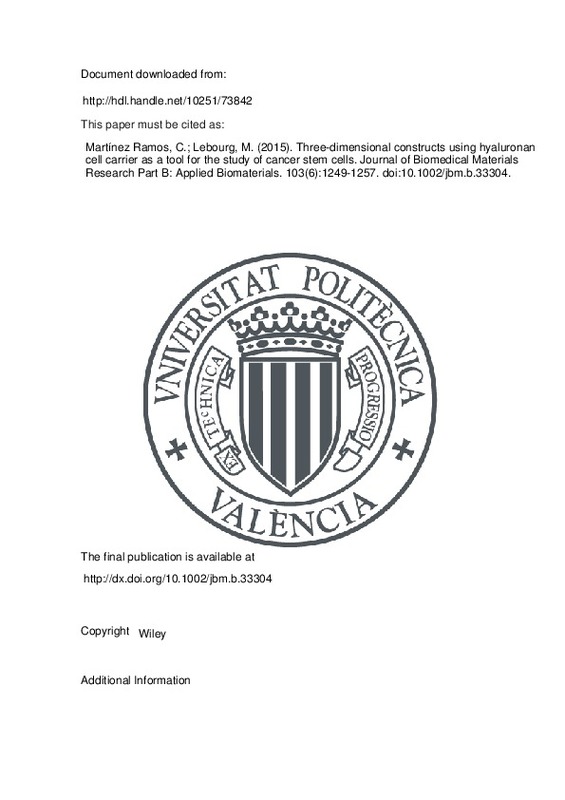JavaScript is disabled for your browser. Some features of this site may not work without it.
Buscar en RiuNet
Listar
Mi cuenta
Estadísticas
Ayuda RiuNet
Admin. UPV
Three-dimensional constructs using hyaluronan cell carrier as a tool for the study of cancer stem cells
Mostrar el registro completo del ítem
Martínez Ramos, C.; Lebourg, M. (2015). Three-dimensional constructs using hyaluronan cell carrier as a tool for the study of cancer stem cells. Journal of Biomedical Materials Research Part B: Applied Biomaterials. 103(6):1249-1257. https://doi.org/10.1002/jbm.b.33304
Por favor, use este identificador para citar o enlazar este ítem: http://hdl.handle.net/10251/73842
Ficheros en el ítem
Metadatos del ítem
| Título: | Three-dimensional constructs using hyaluronan cell carrier as a tool for the study of cancer stem cells | |
| Autor: | Lebourg, Myriam | |
| Entidad UPV: |
|
|
| Fecha difusión: |
|
|
| Resumen: |
Background: Cancer research focuses increasingly on cancer stem cell study as those cells are thought to be the root of chemo and radioresistance of the most aggressive cancer types. Nevertheless, two-dimensional (2D) cell ...[+]
|
|
| Derechos de uso: | Reserva de todos los derechos | |
| Fuente: |
|
|
| DOI: |
|
|
| Editorial: |
|
|
| Versión del editor: | http://dx.doi.org/10.1002/jbm.b.33304 | |
| Código del Proyecto: |
|
|
| Agradecimientos: |
|
|
| Tipo: |
|







![[Cerrado]](/themes/UPV/images/candado.png)


